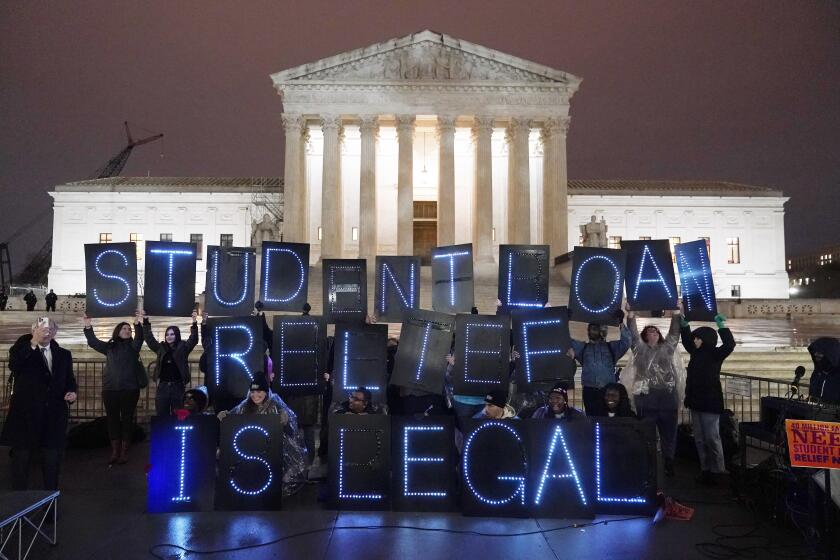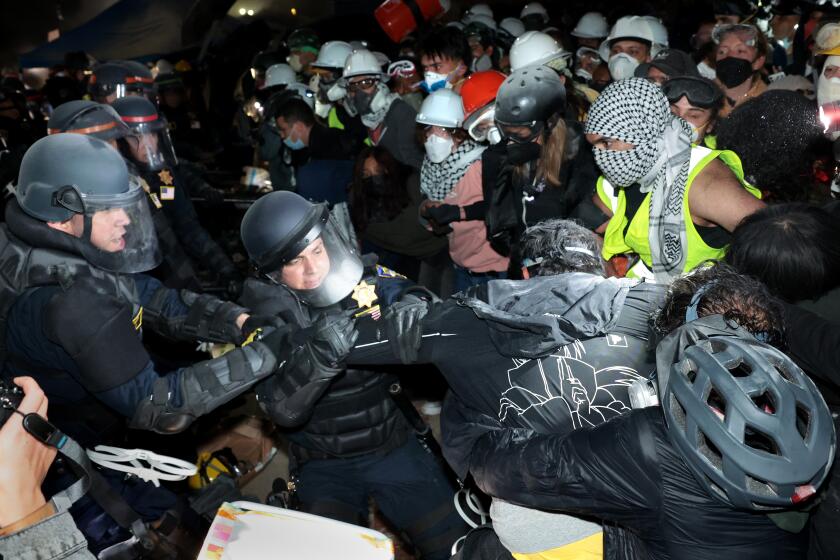Local Control of Schools in Compton Near
Ending an eight-year takeover, the state Department of Education has decided to restore local control of the Compton schools by the end of next month.
An official announcement is expected about the middle of September. At that time, a state team of crisis managers is expected to release a progress report on the 37,000-student district, the only one in California ever to be taken over for both academic and financial reasons.
A draft of that progress report, portions of which were reviewed by The Times, recommends that the locally elected school board receive authority over all district operations. The state already had returned control over facilities and community relations, but not over finances and academics.
State Supt. of Public Instruction Delaine Eastin has privately told state and district officials that she will endorse the team’s recommendations and restore local control, according to three state employees familiar with the matter, who spoke on condition of anonymity.
Tom Henry, director of the state team, confirmed that the return to local control is imminent.
The state’s move would end a yearlong process of restoring local power in five distinct increments. And it would come just as the district’s first superintendent since the beginning of the takeover--former Las Cruces, N.M., Supt. Jesse Gonzales--arrived in town to begin work.
“That is very good news,” Gonzales said Thursday from his newly purchased home in Long Beach, where he was unpacking boxes.
He said Eastin had indicated in a phone conversation earlier this week that a return was near. “I’m anxious and delighted to get the district to start and do the things that we can do,” Gonzales said.
Eastin, in an interview Thursday with The Times, was more tentative, saying she hadn’t seen the progress report yet. But she added: “I won’t be a bit surprised if the report recommends returning control.
“At some point in the not-too-distant future,” she said, “it’s clear to me that Compton will go back. We feel we’ve cleaned out most of the rat’s nest. That district is much, much, much better.”
The district was in chaos in 1993. About $20 million in funds were unaccounted for, and bankruptcy appeared to be a real possibility before the state agreed to cover the shortfall. Student test scores were the lowest in the state.
“I believe it was the most corrupt district in California by far,” Eastin said.
The state’s management of the district was never smooth. In the first three years, the schools appeared to regress. Four men held the job of state administrator of the district; one left after shots were fired in his direction. The current administrator has a bodyguard.
State officials and district employees say the tide turned in 1996, when Eastin tapped Randolph E. Ward, a Long Beach school administrator with no experience heading a district, to be the state administrator.
A tough-talking Boston native, Ward made few friends in Compton’s political community. The mayor publicly denounced Ward, who is African American, as an Uncle Tom. And school board member Saul E. Lankster made a habit of referring to Eastin and Ward in official correspondence as “slavemasters” who treated Compton as a “plantation.”
But many teachers, parents and principals credit Ward with rebuilding the district. He fired dozens of employees in an attempt to eliminate featherbedding and instituted an intense system of audits to check corruption. Ward improved the district’s decrepit facilities so quickly that they earned praise from the American Civil Liberties Union, which had sued the state over unsanitary conditions in bathrooms and hallways there.
In the classroom, Ward and his staff reversed a textbook shortage, hired a cadre of young principals and achieved four straight years of gains in standardized test scores. This year, Compton sent a record number of high school graduates to four-year colleges and offered a record number of Advanced Placement tests.
The gains were impressive enough that last fall, the state announced its plans to return the district in phases. In January, the seven-member school board--which had been merely an advisory body during the takeover--received authority over facilities management and community relations.
Eastin, however, chastised the board this spring for meddling in the schools and stalled the full return for a few months. Still, she allowed the board to hire a superintendent, the first locally appointed one since 1993. In June, after a national search, the board tapped Gonzales, who turned down the job before changing his mind and accepting it in July.
The forthcoming progress report, by a state team of crisis managers, will recommend the return of the three remaining areas of authority: personnel, finances and student achievement. Tom Henry, executive director of the Fiscal Crisis & Management Assistance Team, confirmed those recommendations in an interview Thursday.
“Our recommendation is a return of all areas,” he said. “Our indication is that she is going to act on those recommendations. . . . For Compton, this means we’re in a transition period right now.”
The return of local control does not mean an end to the state’s role in Compton.
Under the legislation governing the takeover, Eastin will appoint a state trustee. That person will have limited power to rescind district decisions that are at odds with sound financial practices. Eastin said Thursday that Ward has agreed to stay on as the state trustee “when the time comes.”
The state team was also ordered by a state court to monitor a court decree that the district signed with the ACLU as part of the lawsuit settlement.
More to Read
Sign up for Essential California
The most important California stories and recommendations in your inbox every morning.
You may occasionally receive promotional content from the Los Angeles Times.






